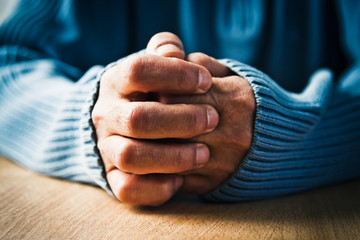- 01843 834160
- [email protected]
- Mon - Fri: 9:00 - 17:00
Get to Know Raynaud’s This Month

February is here, which is a time for celebrations but is also a time to help spread awareness. This month is Raynaud’s Awareness Month, which was established by Scleroderma & Raynaud’s UK (SRUK) to raise awareness about Raynaud’s disease. According to SRUK, “10 million people in the UK are living with Raynaud’s,” but not a lot are seeking out professional help to get diagnosed. If you want to learn more about this disease and help spread the word, make sure you read on!
What is Raynaud’s disease?
If you don’t know a lot about this disease, Raynaud’s (pronounced Ray-nodes) affects your blood circulation. This disease usually affects your hands, fingers, feet or toes and occurs whenever they are exposed to cold temperatures or whenever you’re feeling stressed or anxious.
With Raynaud’s disease, the small blood vessels are overly sensitive and react in an extreme way. This will cause the affected areas to change colour; it will start off as white and then turn blue. When the circulation returns, it will then change to red. The colour change is what you call a Raynaud’s attack.
What is a Raynaud attack like and what are the symptoms?
If someone undergoes a Raynaud attack, the feeling is usually uncomfortable with some even feeling pain. Daily tasks might become difficult to do such as doing your laces or unbuttoning a shirt. Your fingers and toes will usually be affected by Raynaud’s disease, but it can also affect your hands, feet, nose, lips, ears, as well as the tongue.
The symptoms consist of:
- Your hands and feet changing colour, usually when you’re exposed to cold temperatures.
- The affected areas feeling cold and numb.
- Feeling a tingling sensation or pain when circulation returns.
The two types
Believe it or not, there are two types of Raynaud’s disease: primary and secondary.
Primary
Primary Raynaud’s disease is usually mild and any symptoms can be managed. This will hardly develop into a serious problem and people with primary Raynaud’s don’t suffer any related complications. However, it’s still important to contact your GP if you’re showing symptoms.
Secondary
Secondary Raynaud’s disease is usually caused by a different condition. These conditions might be autoimmune diseases such as lupus or scleroderma. For those with secondary Raynaud’s, you’ll need to be monitored carefully in case you experience complications like sores or ulcers. Further investigation will also be needed. Make sure you consult your doctor if you suspect that you have secondary Raynaud’s, especially if you notice your symptoms changing.

Photo from SRUK.
Who can develop it?
Primary Raynaud’s disease is usually common in girls and young women. However, both primary and secondary can be found in men, women and children of all ages too. If you experience cold hands and feet regularly, as well as a change in colour, make sure you consult your doctor.
How to get involved
- Make sure you spread the word by keeping the conversation going on social media by using #KnowRaynauds.
- Host a Catch up with a Coffee event to help raise awareness and funds.
- Take the test to determine whether you have it.
- Download SRUK’s poster to put on display.
This is everything you need to know about Raynaud’s disease and the ways to get involved, which hopefully gives you a better understanding. If you want to help SRUK spread awareness, make sure you head over to their ‘Get Involved‘ page or their donation page.
To support other causes, have a browse through our charities from our directory here.












